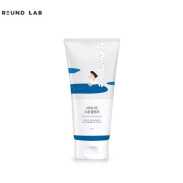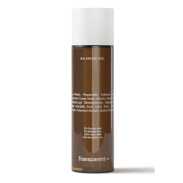Comparison between ROUND LAB Birch Juice Moisturizing Cleanser vs. Transparent Lab Balancing Peel
- 27 components -
- 13 components -
Find out which product is better for your skin.
Components only in ROUND LAB Birch Juice Moisturizing Cleanser 24
Sodium Cocoyl Alaninate, Lauryl Hydroxysultaine, Disodium Cocoamphodiacetate, Sodium Methyl Cocoyl Taurate, Acrylate/c10-30 Alkyl Acrylate Crosspolymer and 19 more. Show all.
Uniqueness: 92.3%
Components only in Transparent Lab Balancing Peel 11
Propanediol, Anthemis Nobilis Flower Water, Glycolic Acid, Cocamidopropyl Dimethylamine, Salicylic Acid and 6 more. Show all.
Uniqueness: 84.6%
Face to Face
Components position by position
1
Water
1
Water
2
Glycerin
2
Propanediol
3
Sodium Cocoyl Alaninate
3
Anthemis Nobilis Flower Water
4
Lauryl Hydroxysultaine
4
Glycerin
5
Disodium Cocoamphodiacetate
5
Glycolic Acid
6
Sodium Methyl Cocoyl Taurate
6
Cocamidopropyl Dimethylamine
7
Acrylate/c10-30 Alkyl Acrylate Crosspolymer
7
Salicylic Acid
8
Betula Alba (Birch) Sap
8
Betaine
Show others
Positive Effects
Find out what good effects the product has
Both products provide the following effects: , Moisturizing, Cleansing, Acne fighting, Softening, Soothing, Anti-aging, Lightening, Rejuvenation, Antiseptic, Regeneration, Hair conditioning, Hair structure improvement, Hair gloss, Hair protection, Hair growth stimulating
Effects unique for Birch Juice Moisturizing Cleanser:
Antioxidant, UV Protection, Lifting, Elasticity improvement, Nutrifying, Anti dandruff, Hair strengtheningEffects unique for Balancing Peel:
Healing, Antifungal-- Show more --
ECO Metrics
Find out how eco-friendly the components are
Vegan
No
No
Cruelty free
No
No
Reef safe
Yes
Yes
Ozone layer safe
Yes
Yes
Organic score
natural
12 out of 26
46%
chemical
9 out of 26
35%
natural
7 out of 13
54%
chemical
6 out of 13
46%
Concerns
Pay attention to this information
-- Extra information --
Components by Skin Type
Find out what components are good or bad for your skin type
Dry skin
Positive: 5Negative: 0
Glycerin#2Butylene Glycol#9Sodium Hyaluronate#10Ascorbic Acid (Vitamin C)#141,2-Hexanediol#15
Oily skin
Positive: 0Negative: 0
Sensitive skin
Positive: 0Negative: 1
Citric Acid#25
Dry skin
Positive: 3Negative: 0
Anthemis Nobilis Flower Water#3Glycerin#4Betaine#8
Oily skin
Positive: 2Negative: 0
Glycolic Acid#5Salicylic Acid#7
Sensitive skin
Positive: 1Negative: 3
Anthemis Nobilis Flower Water#3Glycolic Acid#5Salicylic Acid#7Lactic Acid#10

